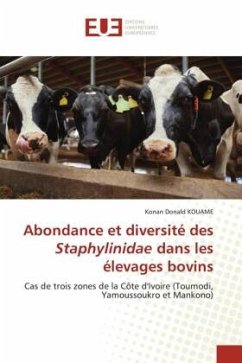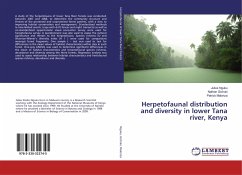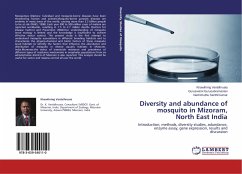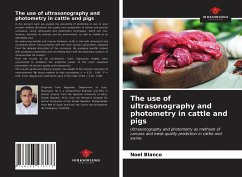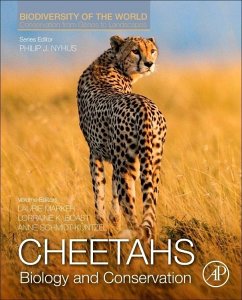
Abundance and diversity of Staphylinidae on cattle farms
Case study of three areas in Côte d'Ivoire (Toumodi, Yamoussoukro and Mankono)
Versandkostenfrei!
Versandfertig in 6-10 Tagen
29,99 €
inkl. MwSt.

PAYBACK Punkte
15 °P sammeln!
Staphylinidae beetles are predators of animal disease vectors and insect pests associated with field and greenhouse crops. The aim of the present study is to determine the abundance and diversity of Staphylinidae on cattle farms. Three sampling sites were chosen to inventory this taxonomic group: the DJERA PRODUCTION farm (Kpouèbo sub-prefecture), the Centre de Sélection Bovine (located on the Yamoussoukro-Bouaflé axis) and the Société Agropastorale Youssouf Fofana site (Mankono). The dung trap method was used to collect Staphylinidae at these sites. This method yielded 248 individuals, r...
Staphylinidae beetles are predators of animal disease vectors and insect pests associated with field and greenhouse crops. The aim of the present study is to determine the abundance and diversity of Staphylinidae on cattle farms. Three sampling sites were chosen to inventory this taxonomic group: the DJERA PRODUCTION farm (Kpouèbo sub-prefecture), the Centre de Sélection Bovine (located on the Yamoussoukro-Bouaflé axis) and the Société Agropastorale Youssouf Fofana site (Mankono). The dung trap method was used to collect Staphylinidae at these sites. This method yielded 248 individuals, representing 18 species divided into 6 sub-families. In terms of abundance, the species Omalium rivulare dominated with 99 individuals (39.92% of individuals collected at the three sites). Staphylinidae abundance was highest in May and lowest in October at Yamoussoukro and Mankono. In Kpouèbo, on the other hand, more individuals were collected in September. The abundance and diversity of Staphylinidae varied from site to site.






